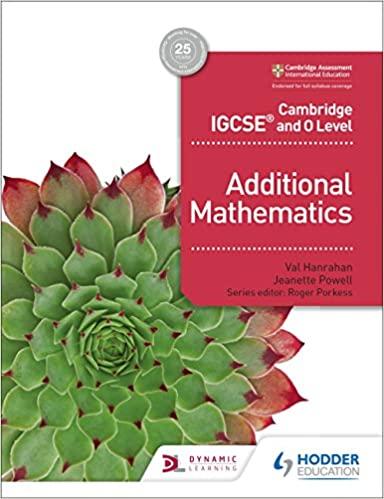Question
In class, we talked about inferring the identity of a secret person from data, and this was central to the reasoning in the previous question.
In class, we talked about inferring the identity of a secret person from data, and this was central to the reasoning in the previous question. But another activity is to infer the possi-bility of someone's secret intent from observed data about their behavior. Here's an example of what we mean by this.
Suppose you and a co-worker that you're friends with are both members of a 15-person committee that holds weekly Zoom meetings at a company where you both work. The committee has met 12 times so far, and each meeting gets about 2/3 attendance (so on average there are about 10 of the 15 committee members in attendance at each meeting, though which 10 varies randomly). Each meeting involves a presentation by one of the executives from the company, and which executive it is also varies from meeting to meeting. Your friend has been to 8 of the 12 meetings so far, which is completely in line with most people's tendency to go to about 2/3 of the meetings. But in thinking about which meetings they've been to and which ones they haven't, you notice something interesting: there's a particular vice-president at the company that neither of you like; this vice-president has been the presenter at four of the meetings so far; and these are exactly the four meetings where
your friend wasn't there. You start to wonder whether your friend is pursuing a "boycott" strategy in which they're
deliberately deciding which meetings to skip simply based on whether this vice-president is the person presenting: perhaps they've decided that they'll attend all the ones where this person isn't the presenter, and skip all the ones where they are. This is the sense in which we mean that it's sometimes possible to make inferences about someone's hidden intent from data: in the current example, your friend's behavior is completely visible, but what's hidden is the potential reason for their behavior.
I decide to complete a quick calculation to see how likely it is that they're pursuing this boycott plan. First, to be able to do any calculation at all, let's take a simplified model of meeting attendance in which each member of the committee attends each meeting with probability 2/3, independently of their actions in other weeks and of any other member's actions. (Except possibly your friend, who might be choosing which meetings to attend non- randomly based on this boycott strategy.) Second, let's suppose that your initial estimate that your friend was pursuing this boycott strategy, before seeing any evidence, was 1%. If they were pursuing this strategy, then you would definitely see exactly the behavior you've observed, which is that they missed exactly the meetings where this particular vice-president was the presenter. On the other hand, maybe these are just the meetings they happened to miss at random.
In fact, if we take these as your assumptions, then you can work out exactly what the probability is that your friend is pursuing the boycott strategy based on what you've seen.
(2.1) (2 points) First, suppose you want to express the probability that you're interested in as the value of a conditional probability Pr[A | E], for some claim A and some evidence E. What would you choose for A and E so that Pr[A | E] is the value we're seeking? Give an explanation for your answer.
(2.2) (5 points) Apply Bayes' Rule to your choice of A and E from (2.1), to compute Pr [A | E], the probability that your friend is pursuing the boycott strategy based on what you've seen. As part of this, show the calculations you use to start from the formula for Bayes' Rule and to arrive at the value of conditional probability.
After you engage in this reasoning, the committee has three more meetings (following up on the first 12 meetings that we've been discussing so far, for a total of 15 to date). The vice-president that neither of you like is the presenter at one of these, and your friend doesn't attend that one; at the other two, where the vice-president isn't there, your friend attends. That means that it is still consistent with everything you've seen that your friend could be pursuing the boycott strategy; but what is its probability now, after all 15 meetings?
(2.3) (4 points) Apply Bayes' Rule to to compute the new value of Pr [A | E], the probability that your friend is pursuing the boycott strategy, based on what you've seen over all 15 meetings. As part of this, show the calculations you use to start from the formula for Bayes' Rule and to arrive at the value of conditional probability.
Step by Step Solution
There are 3 Steps involved in it
Step: 1

Get Instant Access to Expert-Tailored Solutions
See step-by-step solutions with expert insights and AI powered tools for academic success
Step: 2

Step: 3

Ace Your Homework with AI
Get the answers you need in no time with our AI-driven, step-by-step assistance
Get Started


